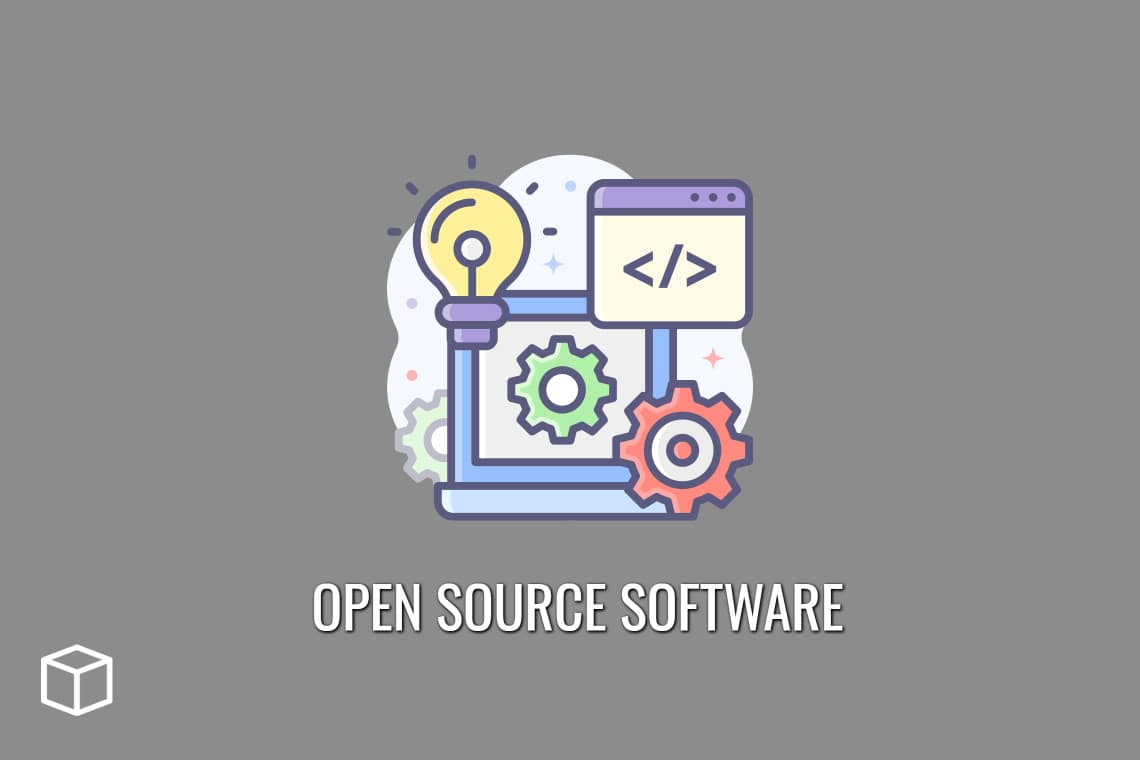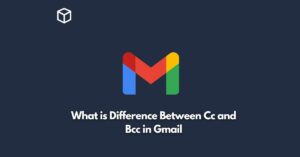Open Source Software is a type of software that can be modified and redistributed without asking for permission from the original creator.
It is available free to use and will allow the user to edit the code as they choose to.
In this article, we will look at Open Source Software (OSS) in detail and will try to answer all your questions with regards to this.
Let’s begin.
What is Open Source?
Open Source Software is any software that has its licensing information publicly available for everyone and the source code is also available to the general public for use or modification as they please.
One example of the open source is the internet browser Mozilla Firefox, that is not only Open Source but also free to use.
What is Open Source Software (OSS)?
Open source software, or open-source software (OSS), is the computer software whose source code is available under a license to study, use, or modify.

Software licensed under an open-source license may be packaged with both free and proprietary software.
A new trend in the open-source community is to create packages with “dual license” where the source code is published under an open-source license, but parts of the documentation or installation scripts are under a proprietary license.
An example of this approach can be seen in MongoDB, whose project was forked from another database system called, simply, “Mongo”. The original developers were displeased at the fact that a company was re-using their branding and trademark.
While open source software is most often available free of charge, there are exceptions.
In some cases an organization may wish to support a for-profit company by purchasing a non-open-source product, but keep it operational and useful by converting its proprietary software to open source.
For example, a company may wish to operate a number of servers running the closed-source Oracle DBMS, but use them for free as an open-source RDBMS such as MySQL or PostgreSQL could run on the same hardware.
A Brief History of Open Source Software (OSS)
OSS was originally set up to solve the licensing problems that came about when using software. The earliest written use of OSS became available in 1976.
Ken Thompson, one of the creators of the Unix operating system, invented it to make software development more efficient and collaborative.
The early roots of OSS go all the way back to 1976 when Ken Thompson created it. His original motivation was to solve problems with licenses for software used by Bell Labs researchers who had difficulty sharing their programs because most were issued under proprietary licenses.
The first documented use of open source code was in 1983 when Richard Stallman launched his GNU Project, which aimed to recreate an operating system that would be free and unfettered for users.

The term open source made its first appearance in a February 1986 article written by Christine Peterson, who was the wife of newly elected U.S. Rep. Gary H. Peterson.
In March 1998 Netscape Communications Corporation released their popular Netscape Communicator suite as OSS under the Netscape Public License and later as the Mozilla project which became the Firefox browser. Many other OSS projects started around this time.
How is Open Source Software useful to businesses?
The primary benefit of open-source software is cost savings.
Similar to the collaborative models used in co-operatives and understanding how startups work, free, open source software reduces or eliminates your need for a large IT team and expensive IT services.
How to select an Open Source Software?
Selecting an open-source software for your business requires a lot of consideration.
Open source software may be free or have a low cost, but it does not mean that it will be the right choice for your business.
You need to compare it with other types of software to see if there are any significant differences between them.
The Quality of the software is very important because you might need to use it for many years before updating which means that you will need to determine how long the system will last for.
You should also consider how easy it is to use and how relevant it is to your needs. You should also take a look at the cost of upgrading and how it will affect your business’s cash flow.
You should consider how much support you will receive from the vendor or developer.
You need to determine whether the company is going to be around for a long time, this means that they have a stable business model and their software is being updated frequently.
Remember that your choice has to be open-source and not free software because open-source refers to the source code which is available publicly.
Free programs are usually developed by a single person or group, without any guarantees on their functionality and security. These programs can’t be considered as an open-source because there is no cooperation between them.
What are the types of open source licenses?
There are many different licenses for open source software.
Here is a list of the most common types:
- MIT License: similar to BSD, allows you to take open source code and use it in proprietary products as long as they are clearly stated to not be affiliated with or supported by the author.
- GNU General Public License: allows people to use and distribute your code, even in commercial products, as long as they make their changes available publicly under the same terms.
- Copyleft: requires that people who use the code give back to the community by making their changes and updates available to others.
- Share Alike: releases from this license require anyone adapting or building on the original work to make those changes available under similar terms.
- BSD License: very permissive, allows use of the code in proprietary products, but does not require them to be released under open source terms.
- Apache Software License: also very permissive, allows use of the code in proprietary products as long as it is clearly stated that they are not affiliated with or supported by Apache.
- GNU Lesser General Public License: very similar to the original GPL, but with an added provision that users can link their own code to it without automatically having their changes released under the GPL. This license is sometimes called “weak copyleft.” (Think Linux kernel.)
- Mozilla Public License: similar to the old Netscape Public License, and is one of the most liberal open source licenses in terms (similar to Apache). A few of its provisions that are relevant to embedding include requiring that when you add additional code/files that increase size or complexity, then your new files must be made available; and providing a mechanism (similar to the BSD advertising clause) for notifying downstream users of changes.
- Common Development and Distribution License (CDDL): based on GPL v2, but without the “copyleft” — that is to say that it allows incorporation into proprietary products.
- Eclipse Public License: similar to MPL, with some additional requirements around patents and advertising. (This is one of the licenses that IBM uses for Eclipse.)
- European Union Public License (EUPL): based on GPL v3, but not copyleft; allows use in proprietary products as long as they provide their own license alongside which states what users are allowed to do with it.
What is the Open Source Initiative?
The Open Source Initiative (OSI) is a non-profit corporation with the goal of spreading open-source software.
According to their website, “OSI exists to educate about and advocate for the benefits of open source and to build bridges among different constituencies in the open-source community.”.
The OSI’s board members include some of most recognized names in computer software, including Linus Torvalds, Larry Augustin, Chris DiBona, Jon “maddog” Hall, Frank Hecker, and Eric S. Raymond.
How does Open Source Software work?
Open-source software is software that can be accessed, modified, and distributed for free. Open-source software is typically created by volunteer developers who do not work for profit.
This type of software has the potential to provide users with more freedom than traditionally closed-source commercial software.
Why make software open source?
When software is open source, it gains a wider range of knowledge, skills, and resources. The different people can help to tweak the software to make it better for everyone.
The code also becomes easier to understand which means that bugs are found faster.
If you have open-source software, other developers can’t create their own version of it because they have the same code already.
When you develop your own version of an open-source product, you’re just creating something that’s not as good.
This also lets more programmers review the code, thus making it become better and other people can benefit from your work.
This is why open-source software becomes really helpful for companies because it’ll be easy to find developers and staff members who know how to use and work on these types of software.
Is Open Source Software Secure?
Open-source software has become the new, preferred choice for many companies due to its security benefits.
Open-source code is not only open to public scrutiny, it is also evaluated by multiple front-end development teams with experience in securing web applications.
However, many times the code is not secure enough and does not meet the security standards that a company expects.
What are some examples of open source software?
Some examples of open source software are Linux, Wireshark, and Mozilla Firefox.
Open source software isn’t just about coding, though. Some open source projects have a large community of developers and users, while others, while still free to use, are maintained by a single developer.
The one thing that all open source projects have in common is that they’re available for anyone to modify or distribute under the terms of an open source license.
What are the advantages and disadvantages of open source software?
Advantages of OSS are:
- Open source software is very flexible and can be customized according to your needs
- You can make changes to the software, making it necessary for you to be technically skilled.
- If you are not an expert of open source software, there are thousands of tutorials available on the internet to help you know how to use the program effectively.
- There is an abundance of support available for open source software.
- Since the software is free, your only expense is your computer’s processing power.
Disadvantages of OSS are:
- There is no paid support for open source software, meaning that if you get stuck, you’re on your own.
- The design of open source programs is not as polished and aesthetically pleasing. This can be a big turn-off for business users who want their programs to look professional and company appropriate.
- Open source software may contain bugs, errors or viruses that you were not aware of when downloading the program.
- You need to know how to use the software before doing anything with it, otherwise you may end up making changes that are incorrect.
- Not all open source software is well documented, meaning that if there isn’t proper documentation for the program then it will be difficult to learn how to use it.
Why is Open Source Software popular?
It’s pretty popular because people can contribute code and get involved in the process of what they use.
It also makes programming easier because if there’s a bug in one part of the program, someone else might fix it and upload their fix back to the repository for all to use.
Who uses Open Source?
People who use open source are designers, programmers, engineers, people in education, and scientists.
There are also a number of people who work in administration or marketing, but all told it’s people who come from technical backgrounds.
Where can I learn more about Open Source?
You can learn more about open source on the following website: https://opensource.com/about
You Might Also Like
- What is Web Development and How to Learn it
- What is Mobile Development and How to Learn it
- What is Proxy server and How does it work?
- What is Hadoop and How does Hadoop work?
- What is Django and How does it work?
- What is TensorFlow and How does it work?
- What is Scala and How does it work?
- What is GitHub and how does it work?
- What is Machine Learning and how does it work?
- What is Artificial Intelligence and how does it work?





